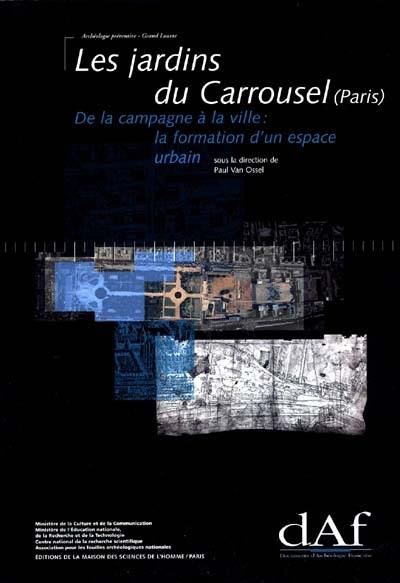
Fiche technique
Format : Broché
Nb de pages : 388 pages
Poids : 1450 g
Dimensions : 21cm X 30cm
EAN : 9782735107964
Les jardins du Carrousel (Paris)
de la campagne à la ville : la formation d'un espace urbain
Quatrième de couverture
Au coeur de Paris, le projet du Grand Louvre suscita des fouilles urbaines d'une ampleur exceptionnelle. Tant par la nature des découvertes que par la maîtrise des stratégies de recherche, cette opération archéologique fut un modèle du genre. Voici la synthèse des études menées sur ce site prestigieux où s'accumulèrent, au fil de l'évolution d'un espace rural plus urbain, les traces laissées par l'homme de la Préhistoire au XIXe 5.
Aux fosses et mobiliers des agriculteurs du Néolithique et de la Protohistoire succèdent une carrière de limon plus le parcellaire d'un suburblum de Lutèce, encore présent au IXe 5. Un manoir du XIVe 5., orné de peintures murales, précède l'emprise de la ville sur ce secteur par l'enceinte de Charles V et le faubourg attenant, tandis que les tuileries restent actives durant trois siècles. Au XVIe 5., le site est bouleversé par la construction du château des Tuileries et du Jardin Neuf. L'interprétation des multiples vestiges, étayée par les études paléoenvironnementales et les documents d'archives, fournit des données neuves, voire inattendues, sur l'utilisation des sols avant l'urbanisation, la condition des habitants, la destinée d'édifices célèbres, Ainsi ce livre nous conte une histoire, <
In the heart of Paris, the Grand Louvre project led to urban excavation on an exceptional scale. This archaeological operation was a model of its kind, both by the nature of its findings and its state-of-the-art exploration strategies.
An overview is presented here of the studies conducted at this prestigious site, where as a rural, then an urban space developed, the traces left by humankind from prehistoric times to the 19th century have accumulated. The trenches and material of farmers of Neolithic and protohistoric times gave way to a silt quarry, then to the plots of land in a suburbium outside of Luletia, still present in the 9th century. A 14th century manor house, decorated with mural paintings, preceded the city's encroachment on this area, seen in the Charles V city wall and the neighbouring faubourg, while the tile works continued to be active for three centuries in the 16th century the tile was drastically altered by the construction of the Tuileries castle and the Jardin Neuf. Interpretation of the numerous vestiges, supported by palacoenvironmental studies and archival documents, provides new and sometimes unexpected data on land use before urbanisation, on the social status of the inhabitants, on the fate of renowned edifices. This book tells a story, "the story of a small piece of Paris", one of the great seats of the history of France.





